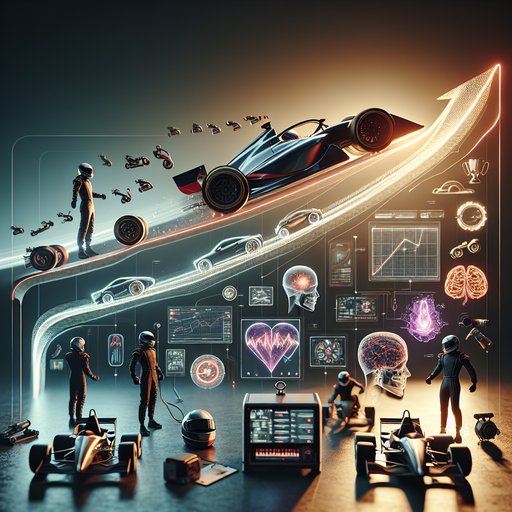
Becoming a Formula 1 driver is no longer a tale of raw talent alone; it is a carefully engineered journey that blends karting fundamentals, a structured ladder of single‑seater series, elite simulator work, and cutting‑edge sports science. With in‑season testing tightly restricted, teams rely on virtual development and data‑driven coaching to accelerate learning, while athletes train like endurance sprinters to withstand the forces and heat of a modern Grand Prix. Mental preparation underpins it all, from managing complex car systems to thriving under constant scrutiny. This is the contemporary blueprint that molds young racers into complete competitors ready for motorsport’s highest level.
Understanding how modern Formula 1 drivers are developed illuminates the sport’s broader evolution from instinct to integration. The pathway now aligns talent, technology, and training with a precision once reserved for the cars themselves, reflecting how performance has become a systems problem rather than a single variable. Testing limits and cost controls have pushed preparation into simulators and structured academies, changing when and where skills are acquired. The result is a pipeline that produces athletes who are technically literate, physically resilient, and psychologically robust before they ever start a Grand Prix.
Karting remains the sport’s foundation because it compresses every essential lesson into a pure, unforgiving environment. Drivers learn racecraft, braking modulation, tire management, and wet‑weather intuition across CIK‑FIA categories long before telemetry becomes the dominant language. Many champions and race winners, from Lewis Hamilton and Max Verstappen to Charles Leclerc and George Russell, honed their craft in international karting paddocks against future F1 peers. The intensity of close‑quarters racing, frequent starts, and constantly evolving grip conditions cultivates the reflexes and decision‑making speed that later translate to single‑seaters.
The FIA’s single‑seater pyramid formalized the next steps, streamlining the route through FIA Formula 4, Formula 3, and Formula 2. Spec chassis and engines, Pirelli tires, and standardized procedures create consistent learning milestones, with DRS and race formats that echo F1’s demands. Crucially, the FIA Super Licence system awards points for success across these championships, incentivizing progression through high‑quality grids. This structure calibrates talent against known benchmarks and prepares drivers for the tactical reality of tire‑limited racing and reverse‑grid dynamics.
Team academies provide the scaffolding that turns promise into preparedness. Programs such as the Ferrari Driver Academy, Red Bull Junior Team, Mercedes‑AMG F1 Junior Programme, Alpine Academy, McLaren’s and Williams’ pathways, and Sauber’s scheme offer coaching, simulator access, physical conditioning, and media education. These relationships also align junior drivers with technical philosophies and operational cultures they may later encounter in F1. Graduates like Verstappen, Leclerc, and Russell show how coherent support, combined with results in F2 and F3, can accelerate the final step to a race seat.
Driver‑in‑the‑loop simulators now function as the virtual proving ground where racecraft meets engineering rigor. Full‑size cockpits on motion platforms, wrap‑around visuals, and high‑fidelity tire and aerodynamics models let drivers rehearse circuits, practice procedures, and test set‑up directions without burning mileage. Teams build correlation by matching simulator outputs to track telemetry, so drivers learn to trust the virtual car and contribute to development through structured runs and debriefs. Dedicated simulator drivers complement race drivers by exploring strategies and overnight updates during Grand Prix weekends, a competitive advantage born of limited real‑world testing.
Modern F1 fitness regimens reflect the unique blend of endurance, strength, and thermal resilience required to handle sustained lateral and longitudinal loads. Neck and core programs target isometric strength to keep vision stable through high‑g corners, while interval cardiovascular work prepares drivers for race‑long intensity. Heat acclimation, hydration protocols, and precise nutrition manage cockpit temperatures that can exceed comfort by a wide margin, especially on street circuits. The driver‑plus‑seat minimum mass rule introduced in 2019 mitigates disadvantages for taller athletes, but body composition still matters, so conditioning and recovery are planned with gram‑level intent.
Cognition and mental preparation are trained as deliberately as physical qualities. Drivers use visualization to embed braking references, lines, and race starts; mindfulness and breathing techniques help regulate stress during safety car restarts and variable strategy calls. Steering wheels with arrays of rotaries and multi‑function inputs require rapid, error‑free changes to differential maps, brake migration, and energy deployment while wheel‑to‑wheel. Data‑driven debriefs teach athletes to translate sensations into engineering language, comparing overlays of throttle, brake pressure, steering trace, and GPS to refine repeatable technique under changing tires and fuel loads.
The wider ecosystem now shapes readiness beyond the cockpit. Esports and high‑level sim racing sharpen race reading, traffic management, and adaptability to evolving grip, mirroring the feedback loops found in professional simulators. Travel logistics and circadian strategies are coached to sustain performance across a record‑length calendar, while media and sponsor training prepare drivers for the public dimensions of the job. Efforts to broaden access, including scholarships, national F4 initiatives, and platforms like F1 Academy, aim to widen the talent pool without diluting the standards demanded at the top.
This convergence of opportunity and accountability underscores a sport increasingly invested in the human element as a competitive differentiator. What emerges is a development model that treats the driver as an integrated performance system, tuned by the same iterative methods used to improve the car. Karting establishes instincts, the ladder validates them under pressure, simulators translate feel into data, and sports science helps deliver it every lap. The process does not break from motorsport’s past so much as refine it, fusing craft with computation to meet the speed and complexity of modern Formula 1.
In that synthesis lies the blueprint for the next generation of champions, ready not only to drive fast, but to think fast, endure, and evolve.











































